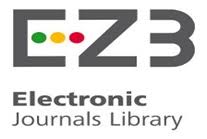Archive
Volume 1, Issue 1
International Journal of Science and Engineering Applications (IJSEA)
Volume 1, Issue 1 - November 2012
Sketch Based Image Retrieval Approach Using Gray Level Co-Occurrence Matrix
Abstract:
This work focuses on Content Based Image Retrieval (CBIR) system using sketches, which is one of the most accepted, rising research areas of the digital image processing. The majority of the available image searching tools, such as Google Images and Yahoo Image search, are based on textual annotation of digital images. In these searching tools, images are manually annotated with keywords and then retrieved using text-based search techniques. The presentations of these systems are not satisfactory. The aim of CBIR is to extract visual content of an image automatically, like color, texture, or shape. The Proposed method used to introduce the design and the creation of CBIR systems, which is based on a free hand sketch which is known as Sketch based image retrieval (SBIR). In this technique, texture is used as feature for image retrieval. The texture features are obtained by using Gray-Level Co-occurrence Matrix (GLCOM).This process can be used as coarse level in hierarchical CBIR that reduces the database size from very large set to a small one. This small database can further be examined thoroughly using the wavelets, edge detection, etc. The sketch based system allows users an intuitive access to searching tools. This process can be implemented and simulated in MATLAB.
Keywords: Image, Gray level co-occurrence matrix (GLCOM).
References:
[1] B S Manjunath, W Y Ma, “Texture feature for browsing and retrieval of image data”, IEEE Transaction on PAMI, Vol 18, No. 8, pp.837- 842, 1996.
[2] D. Comaniciu, and P. Meer, “Robust analysis of feature spaces: color image segmentation,” IEEE Conference on Computer Vision and Pattern Recognition, pp. 750-755, June 1997.
[3] T. Deselaers, D. Keysers, and H. Ney, “Feature for image retrieval: an experimental comparison,” Information Retrieval, vol. 11, pp.77-107, December 2007.
[4] R. Fabbri, L.D.F. Costa, J.C. Torelli, and O.M. Bruno, “2D Euclidean Distance Transform Algorithms: a comparative survey, ACM Computing Surveys, vol. 44, pp. 1–44, February 2008.
[5] A.K. Jain, J.E. Lee, and R. Jin, “Sketch to photo matching: a feature-based approach,” Proc. SPIE, Biometric Technology for Human Identification VII, vol. 7667, pp. 766702–766702, 2010.
[6] A.K. Jain, J.E. Lee, R. Jin, and N. Gregg, “Content based image retrieval: an application to Tattoo images,” IEEE International Conference on Image Processing, pp. 2745–2748, November 2009.
[7] D. Squire, W. Mueller, H. Mueller, and J. Raki, “Content-Based Query of Image Databases, Inspirations from Text Retrieval: Inverted Files, Frequency-Based Weights and Relevance Feedback,”Proc. Scandinavian Conf. Image Analysis, pp. 7-11, 1999.
[8] W. Niblack et al., “The QBIC Project: Querying Images by Content Using Color, Texture, and Shape,” in Proc. SPIE, vol. 1908, San Jose, CA, pp. 173–187, Feb. 1993.











